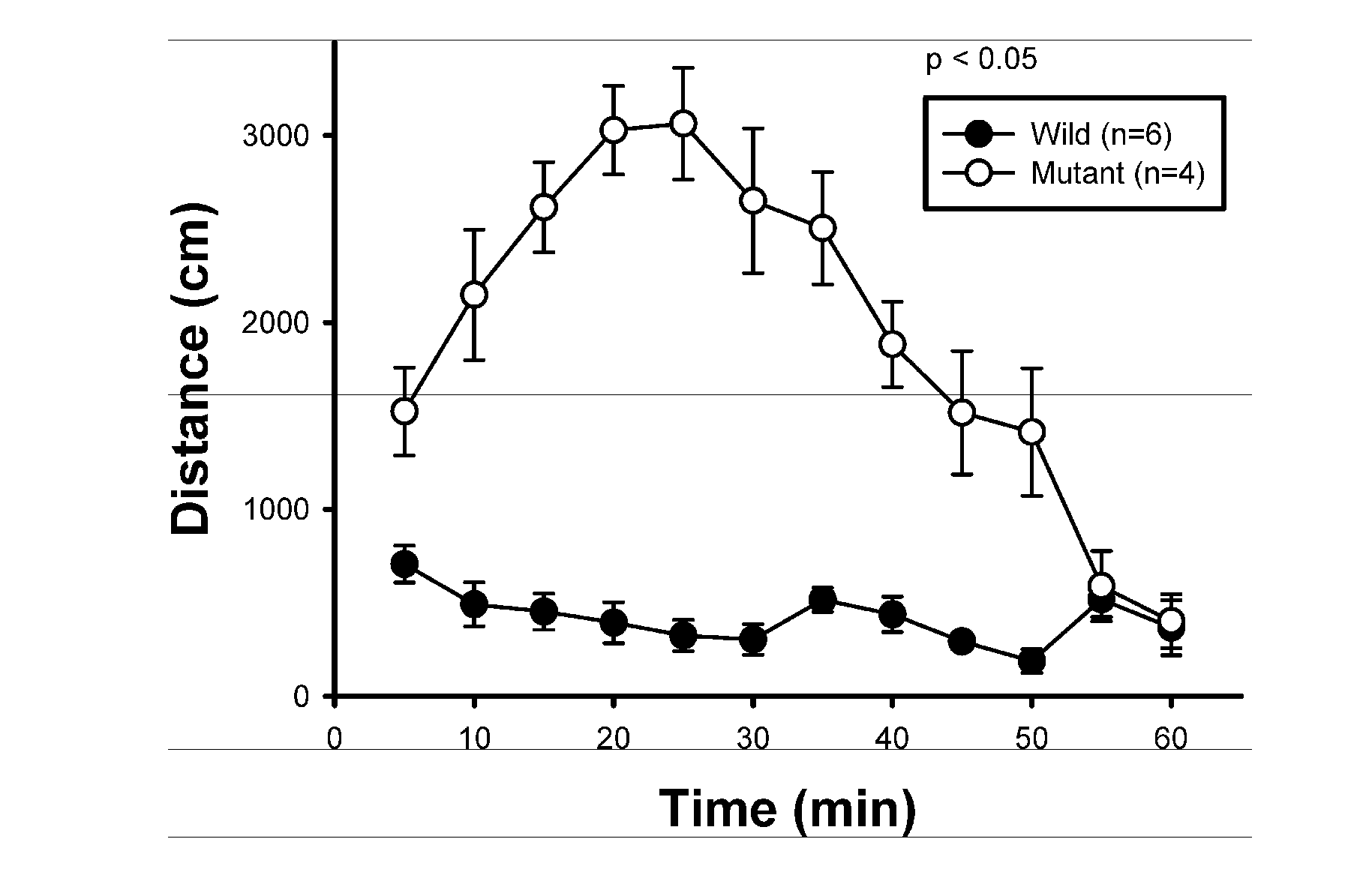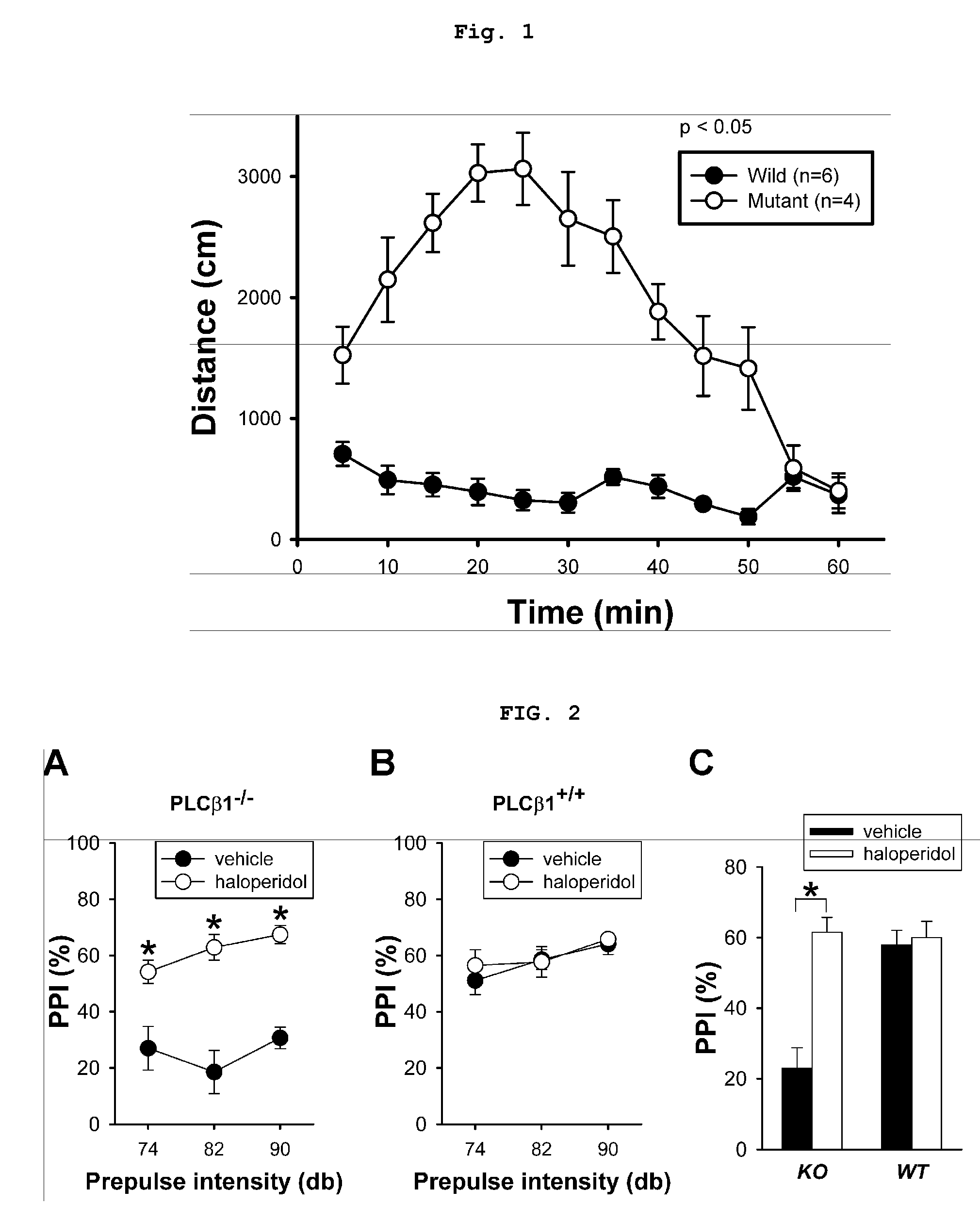Phospholipase c beta1 (plcbeta1) knockout mice as a model system for testing schizophrenia drugs
a technology of phospholipase c beta1 and mouse, which is applied in the field of screening drugs against schizophrenia using a geneknockout animal model, can solve the problem of not developing animal models simultaneously having multiple endophenotypes
- Summary
- Abstract
- Description
- Claims
- Application Information
AI Technical Summary
Benefits of technology
Problems solved by technology
Method used
Image
Examples
example 1
Construction and Rearing of the Knockout Mouse
[0026]The generation of PLCβ1− / − mice and the genotyping method are as described in Kim et al. (Nature 389:290˜293, 1997). F1 homozygous mice and wild-type littermates were obtained by crossing C57BL / 6J(N8)PLCβ1+ / − and 129S4 / Svjae(N8)PLC β1+ / − mice. All animal care and handling were in observance of the institutional guidelines of the Korea Institute of Science and Technology (KIST). Mice were maintained with free access to food and water under a 12-hour light / dark cycle with light beginning at 6:00 AM.
example 2
Locomotor Activity in Open-Field Tests
[0027]Each mouse (˜10 weeks old) was gently placed at the center of an open-field test kit (40×40×50 cm white acrylic rectangular box, custom made) to start the test. Locomotor activity in the kit during 1-hour period was monitored in 5-minute intervals via digital video recording. The tests were carried out between 9:00˜15:00 during the day.
[0028]The tests showed that the distance traveled by PLCβ1− / − mice was substantially longer than wild-type, indicating an increased locomotor activity for the knockout mouse. Habituation to new environment was similar in both types of mice.
example 3
Tests for the Prepulse Inhibition (PPI) of Aural Startle Response
[0029]PPI tests were carried out with 26 responder mice 13˜15 weeks old by using a single acoustic startle chamber (Coulbourn Instruments, USA), one mouse at a time. The startle reflex was triggered by a pulse stimulus in the form of a 40 msec, 120 dB burst of white noise (SS). Inhibition of the SS-elicited startle response was achieved using a 20 msec-prepulse stimulus of various intensities (74, 82, and 90 dB white noise) that preceded SS by 100 msec.
[0030]The test was composed of a series of 7 blocks, each of which was a “semi-random” mixture of 8 different trial types (no stimulus, SS only, three PP only, three PP plus SS), separated by 10 to 15-second intertrial intervals. The percent prepulse inhibition (hPPI) was calculated as [1−(response to PP-SS coupling / response to SS only)]×100.
[0031]Haloperidol (0.2 mg / kg body weight) was intraperitonealy (i.p.) administered 45 minutes before the test, using 0.5% dimethyls...
PUM
 Login to View More
Login to View More Abstract
Description
Claims
Application Information
 Login to View More
Login to View More - R&D
- Intellectual Property
- Life Sciences
- Materials
- Tech Scout
- Unparalleled Data Quality
- Higher Quality Content
- 60% Fewer Hallucinations
Browse by: Latest US Patents, China's latest patents, Technical Efficacy Thesaurus, Application Domain, Technology Topic, Popular Technical Reports.
© 2025 PatSnap. All rights reserved.Legal|Privacy policy|Modern Slavery Act Transparency Statement|Sitemap|About US| Contact US: help@patsnap.com



